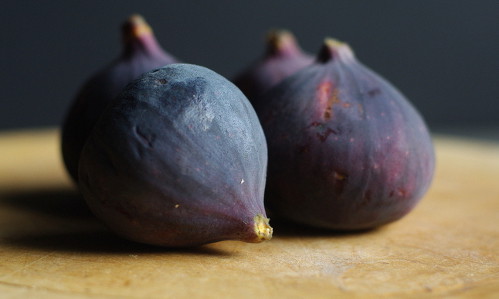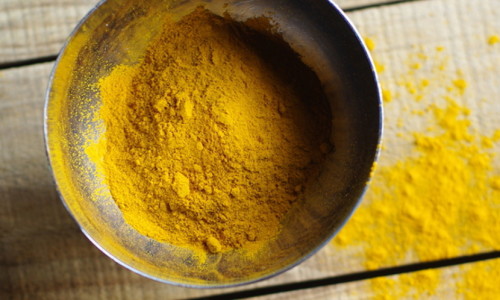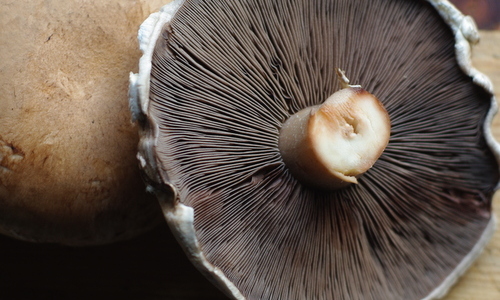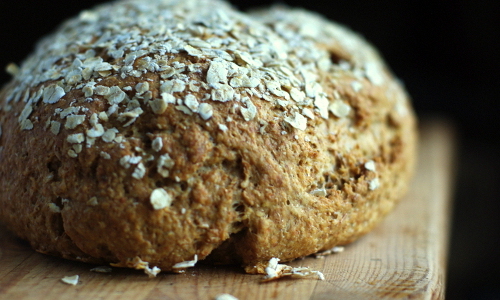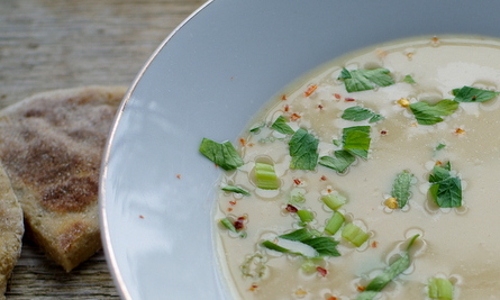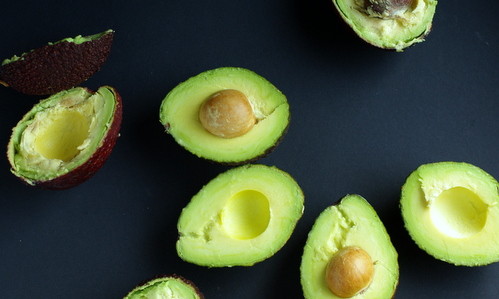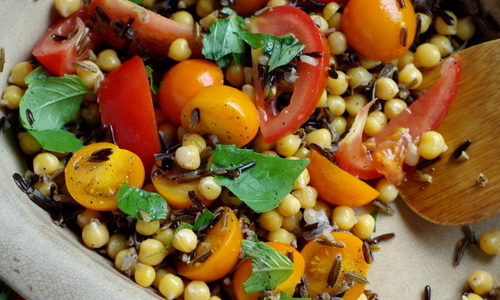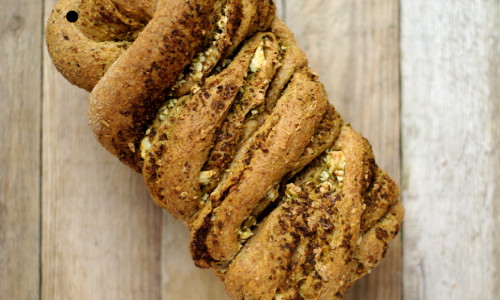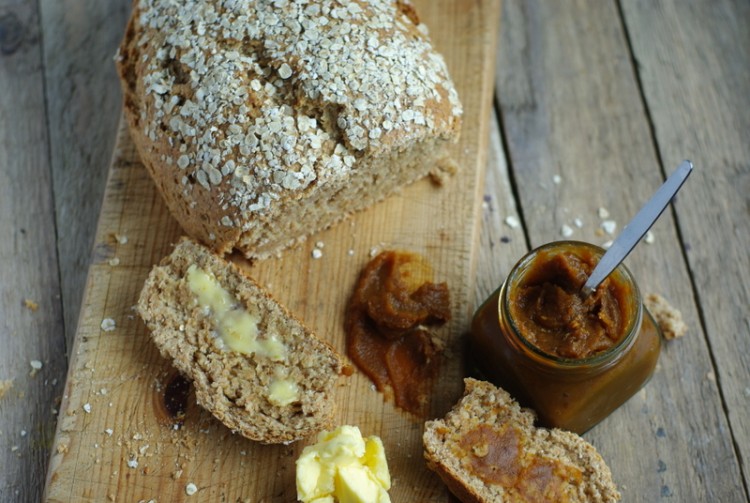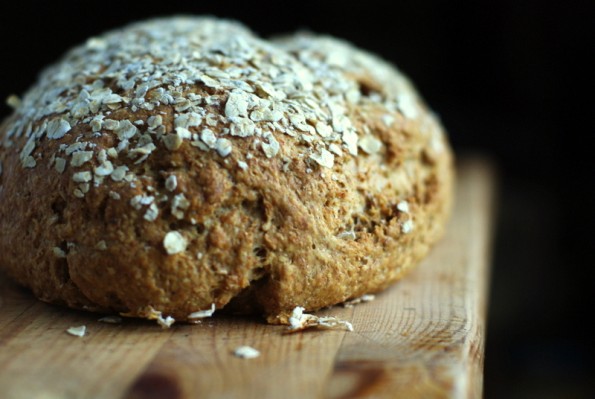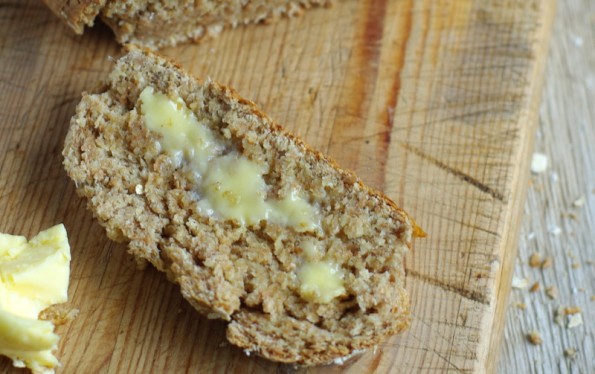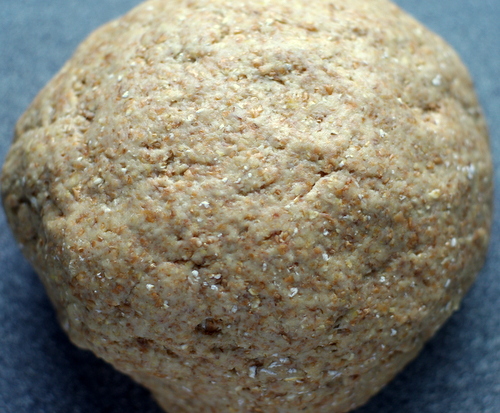I’ve been baking for a few years now, but for the longest time my baking was all pretty conventional. I used a lot of white flour, sugar and butter and baked some very lovely things. It’s only pretty recently, when I decided to cut down a bit on the amount of processed stuff in my diet, that I really started to experiment with alternative ingredients. I think that I always kind of thought that a world of baking without white flour and sugar would be very limiting, and the resultant baked things would be heavy and bland. Once I opened the “alternative ingredients” door though, I found it to be anything but what I’d expected. Far from limiting my baking, it’s actually had the opposite effect, leading me to recipes from around the world that I’d never heard of or never thought of, and sparking my imagination, leaving me emboldened and eager to invent new things. It turns out that it was with sticking to the conventions of Western baking that I was limited, and this mission to branch out has freed up my baking limitations.
It’s with this sense of experimentation and discovery that I’ve been madly trying out every kind of new flour that I can get my hands on. I’ll come across something new, obsess over it for a while and then move on to the next thing. It’s all been very fun and very eye opening. Did you know, for instance, that you can get wild rice flour, chestnut flour, or that you can replace flour in some recipes with mashed beans? Did you know that you can make yam flour…yourself…at home (I just discovered that one today and will definitely be trying it out in the next week…imagined baking a cake or bread made with your own, home made yam flour!)? I find these things extremely exciting and I could go a little bit nuts in the health food store if finances would allow it. However, I also think that this sense of discovery could extend to the ingredients that are common in the kitchen. What about trying to use those things that are always quietly sustaining us but in new interesting ways?
How about oats? We all know that oats are really good for us. They’re loaded with nutrition, and in particular, are full of the specific type of dietary fiber, beta-glucan. And so in hopes of balancing our blood sugars and improving our digestion and heart health we’ve all been dutifully downing our morning porridge (not that there’s anything at all wrong with porridge, in fact it’s one of my all time favourites regardless of its health benefits).
I think, though, that by prescribing oats use as limited to porridge and maybe crumble, we’re missing out on so many wonderful recipes that could include this magnificent grain.
Oat flour is a pretty easily found ingredient these days, but it’s actually really effortless to make your own oat flour at home for a minute fraction of the price. I tend to get a big bag of cheap, regular porridge oats (just plain, milled oats, not the quick cook kind. Those ones have already been partially cooked and then dehydrated, so using them as flour would give you a really soggy result), weigh out the amount in the whole oats that I need of the finished flour and then blitz it in the blender for about 10 seconds and that’s it! Home made, super easy and affordable oat flour for about a minute’s work, and it can be left as coarse as you like or as fine as your blender will allow.
I’ve been making this flour for about a year now and using it to make oat cakes and pastry, but it wasn’t until I was trying to come up with a healthy version of frangipane, and it kept coming out really dry, that the penny finally dropped; oats retain moisture, why not make use of that property? It worked perfectly. Oats flour is an excellent choice to add to your baking if you want it to be nice and moist.
Today I’ve decided to try out making oat bread. I wanted to do a yeasted loaf using whole grain flour along with the oats, and I wanted it to be a little bit sweet to complement the naturally slightly sweet flavour that oats have. I started out with a Paul Hollywood recipe for milk loaf. This lovely fluffy tin loaf has a bit of sweetness from the milk and some added sugar, so I thought it would work quite well. I swapped the white flour for a mix of whole wheat and oat, the sugar for maple syrup, and the butter for coconut oil, and decided to make it free form rather than in a tin. The resulting loaf was lovely, filled with flavour and moisture and with a hint of sweetness. This oat bread is a rustic, craggy loaf, and gorgeous toasted with butter.
Tomorrow morning instead of porridge I think I’ll get my oats in the form of lovely oat bread…maybe spread with a bit of fruit butter!
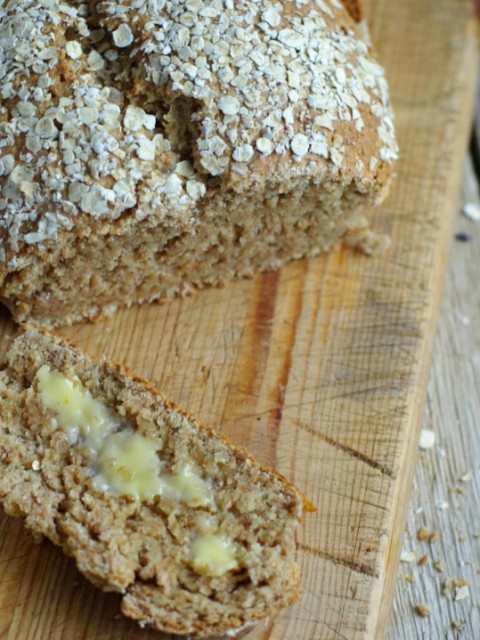

- 200g oats (not the instant kind), plus a handful for sprinkling
- 300g strong whole wheat flour
- 1/2Tbsp salt
- 10g yeast
- 2Tbsp maple syrup
- 30g coconut oil, at room temperature (in liquid form)
- 300mL-320mL tepid milk
- Put the oats in a blender and blitz until they’re the consistency of fairly fine flour.
- In a large bowl combine the wheat flour and oat flour, stir them together so that they’re evenly mixed.
- Add the salt to one side of the bowl and the yeast to the other, don’t let them touch at this point as the salt will kill the yeast if they come in direct contact with one another.
- Pour in the maple syrup, coconut oil and 2/3 of the milk. Turn the mixture with your fingers and begin to squash it to bring it together into a rough dough, adding more of the milk until you have a sticky but not sloppy dough.
- Turn the dough out onto a work surface and knead it for about 10 minutes. You’ll want to work it through it’s wet phase and continue to knead until it becomes smooth, a bit elastic and less sticky.
- Place it in a large clean bowl and cover tightly with cling film. Leave it to rise for about 2 hours at room temperature. It should grow a bit but probably won’t double in size.
- Turn the risen dough back out onto the work top and knock it back. Shape it into an oblong loaf and gently place it on a baking tray lined with baking parchment. Place the tray in a large plastic bag and leave it to prove for a further hour.
- While the loaf is proving preheat the oven to 200 degrees Celsius.
- Once the dough is proved remove it from the bag, brush it with a bit of milk and sprinkle it with the reserved oats. If you want a craggy, rustic looking loaf leave it as it is, but if you want it a bit neater you could slash it with a very sharp blade vertically along the top.
- Place it in the oven and leave it to bake for 45 min- 1hr, until the loaf is risen, golden brown and sounds hollow when the bottom is tapped.
- Leave to cool on a wire rack.

